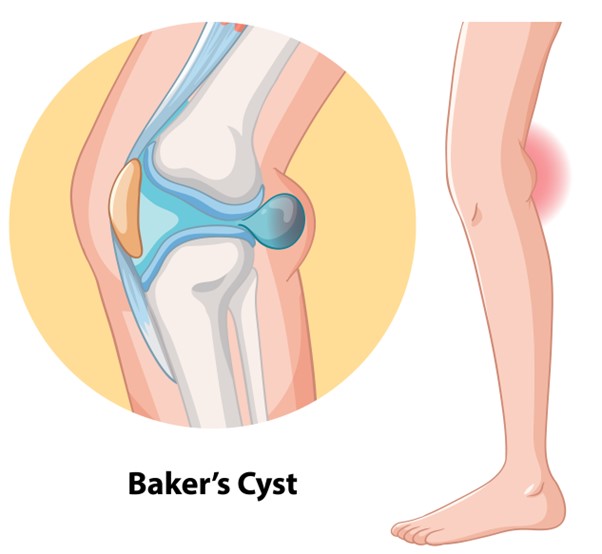What Is a Baker’s Cyst?
A Baker’s cyst is a fluid-filled lump that forms behind the knee. Doctors also call it a popliteal cyst. Often, it happens when extra fluid builds up in the knee joint. This can cause swelling and discomfort. Many people notice Baker’s cyst symptoms like a bump or tightness behind the knee. Sometimes, the cyst is linked to knee problems such as arthritis or injury. According to the CDC, knee swelling is a common reason people visit their doctor.
Common Symptoms of Baker’s Cyst
Baker’s cyst symptoms can vary from person to person. However, some signs are more common than others. You may notice:A soft lump or swelling behind the kneeKnee pain, especially when bending or straightening the legTightness or stiffness in the back of the kneeFeeling of fullness behind the kneeDifficulty moving the knee as usualSometimes, mild redness or warmth around the lump
For many, Baker’s cyst pain gets worse with activity. On the other hand, some people may not feel pain at all. Still, a behind the knee lump is a common warning sign.
How Symptoms May Change Over Time
At first, Baker’s cyst symptoms may be mild. Over time, the lump can grow larger. As a result, you might feel more pressure or pain. Sometimes, the cyst bursts and causes sharp pain, swelling, or bruising in the calf. If this happens, symptoms can appear suddenly. Yet, in many cases, the cyst shrinks or goes away on its own. Even so, symptoms may return if the knee problem is not treated.
When to See a Doctor
It is important to know when Baker’s cyst warning signs need medical care. You should see a doctor if you notice:Severe or sudden pain in the knee or calfRedness, warmth, or swelling that spreadsDifficulty moving your legFever or chills with knee swelling
Sometimes, these signs can mean a more serious problem, like a blood clot or infection. Therefore, do not wait if you have these symptoms. Early care can help prevent complications.
Diagnosis Overview: How Doctors Identify Baker’s Cyst
Doctors usually start with a physical exam. They will check for swelling and a lump behind the knee. Often, they ask about your symptoms and medical history. In some cases, your doctor may order an ultrasound or MRI. These tests help rule out other causes of knee swelling, such as blood clots or tumors. However, most Baker’s cysts are diagnosed by their typical symptoms and appearance.
Tips for Managing Symptoms at Home
Many people can manage mild Baker’s cyst symptoms at home. Here are some helpful tips:Rest your knee and avoid activities that cause painApply ice packs to reduce swellingKeep your leg raised when sitting or lying downUse a compression bandage if your doctor suggests itTake over-the-counter pain medicine, such as acetaminophen, if needed
Still, if symptoms get worse or do not improve, contact your doctor. Sometimes, medical treatment is needed to drain the cyst or treat the underlying knee problem.
Prevention and Lifestyle Guidance
While you cannot always prevent a Baker’s cyst, some steps may help. For example, keeping your knee healthy can lower your risk. Try these tips:Maintain a healthy weight to reduce knee stressExercise regularly, but avoid high-impact sports if you have knee painStretch and strengthen the muscles around your kneeTreat knee injuries or arthritis earlyFollow your doctor’s advice for managing knee problems
In summary, caring for your knees can help prevent Baker’s cyst symptoms from returning.
Conclusion
Baker’s cyst symptoms often include swelling, pain, and a lump behind the knee. Although many cases are mild, some warning signs need quick medical care. If you notice symptoms of a Baker’s cyst, consult a healthcare professional for personalized advice.
